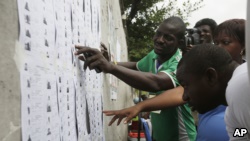MIGRATIN BY CONQUEST, this is no child's play.
While their early habitat in West Africa was apparently in an area in the vicinity of the borders of present-day Mali, Senegal and Mauritania, they are now, after centuries of gradual migrations and conquests, spread throughout a wide band of West and Central Africa. The Fulani People occupy a vast geographical expanse located roughly in a longitudinal East-West band immediately south of the Sahara, and just north of the coastal rain forest and swamps, although situations have changed a lot in recent times, and, a sizable proportion of Fulani people now live in the heavily forested zones to the south, in countries like Sierra Leone, Nigeria, Cameroon, Guinea, The Central African Republic and the Democratic Republic of Congo. Various Fulɓe sub-groups are now found well within the forested southern quarter of West and Central Africa.
There are approximately 20 million Fulani people. They are considered among the most “widely dispersed and culturally diverse peoples in all of Africa.” There are generally three different types of Fulani based on settlement patterns, viz: the Nomadic/Pastoral or Mbororo.
The Semi-Nomadic and the Settled or "Town Fulani". The pastoral Fulani move around with their cattle throughout the year. Typically, they do not stay around, for long stretches {not more than 2–4 months at a time} . The semi-nomadic Fulani can either be Fulɓe families who happen to settle down temporarily at particular times of the year, or Fulɓe families who do not "browse" around past their immediate surroundings, and even though they possess livestock, they do not wander away from a fixed or settled homestead not too far away, they are basically "In-betweeners" .
Settled Fulani live in villages, towns and cities permanently and have given up nomadic life completely, in favor of an urban one. These processes of settlement, concentration and military conquest led to the existence of organized and long-established communities of Fulani, varying in size from small villages to towns. Today, some major Fulani towns include: Labé, Pita, Mamou and Dalaba in Guinea, Kaedi, Matam and Podor in Senegal and Mauritania,
Bandiagara , Mopti , Dori, Gorom-Gorom and Djibo in Mali and Burkina Faso, on the bend of the Niger, and Birnin Kebbi, Gombe, Yola , Jalingo , Mayo Belwa, Mubi , Maroua, Ngaoundere , Girei and
Garoua in the countries of Cameroon and Nigeria, in most of these communities, the Fulani are usually perceived as a ruling class.


Comments
Post a Comment